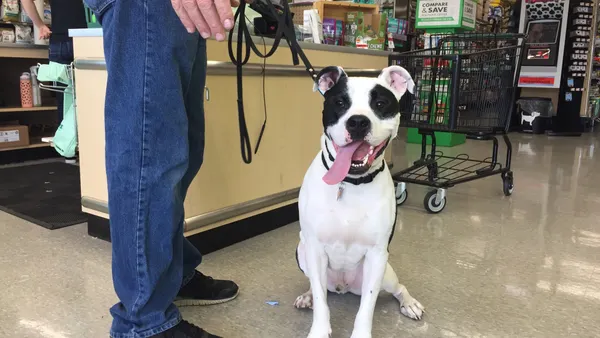Dive Brief:
-
Following research that indicated some customers lack the confidence and skill to embark on their own do-it-yourself projects, home supplies retailer Lowe’s has started running a proof-of-concept program at a store in Framingham, MA for Holoroom How To, an on-demand virtual reality skills clinic to help customers address in-home DIY efforts.
-
Holoroom How To allows customers visiting the Lowe's location to use a virtual reality headset and controller in each hand, and become immersed in a specific DIY project — such as tiling a shower — getting step-by-step instructions to complete the task. Haptic feedback, such as feeling the vibration of a drill through the controller, adds to the life-like experience, without the waste or mess of testing a DIY project in the real world.
-
Holoroom How To represents the latest iteration of Lowe’s Innovation Labs’ Holoroom experience, which the retailer first introduced almost three years ago as an immersive design and visualization tool. In addition to testing Holoroom How To at the Boston area store, over the course of the next several weeks, the offering will be launching in Lowe’s in Burlington, Canada and RONA, a wholly-owned subsidiary of Lowe’s Big Box in Beloeil, Quebec.
Dive Insight:
The bottom line here is to try before you buy. Paint a kitchen or re-tile a bathroom in VR, and you may have a better sense of what lies ahead, and more confidence in how to go about it. That can be one of the beauties of VR technology for retail marketing. It can reduce buyer's remorse, helping customers feel more confident about what they are buying, and what they plan to do with it.
Lowe's continues to be one of the more aggressive implementers of virtual reality and augmented reality technology for marketing applications in retail. The retailer has worked with SciFi Futures on the ongoing Holoroom project, while also working with companies like Marxent, Oculus and Microsoft as it has explored different ways to use the emerging technology to engage customers and help them envision a variety of projects.
While Lowe's is doing things with VR and AR that some retailers aren't ready to try yet, this effort (like its previous ones) is a limited, low-risk commitment: Holoroom How To is only available on one store now, with announced plans for only two others so far.
That's a step-wise approach that probably is appropriate for technology whose value many people continue to question. In general, the retail sector may be feeling a bit of a backlash right now from consumers who may feel that retailers are overloading them with new technology, some of it simply not ready for primetime. In that kind of environment, Lowe's needs to carefully assess customer response to its Holoroom efforts. A DIY helper seems like a fine idea, as long as long as customers use it, and feel it's actually helpful.
You have to credit Lowe's for continuing to come up with new ideas for how to use VR technology. If it can settle on a few winning ideas, and build some buzz around them through gradual expansion, customers finally may get more comfortable with the idea that they can step into a virtual room, learn something they could not have learned just roaming the store aisles and step out with a good feeling about the retailer that enabled that experience. Neither Lowe's, nor other retailers using VR, should expect much more than that for now.













